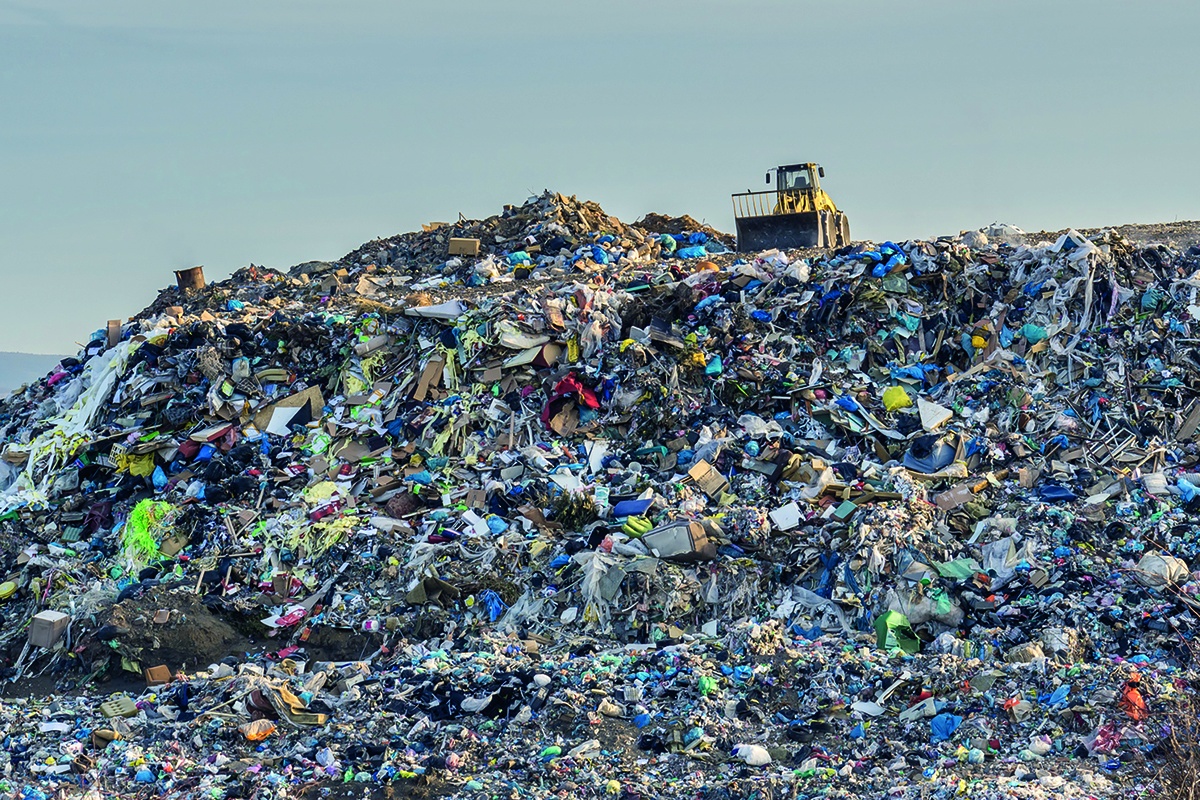Want to stop sending waste large-format display materials to landfill? If there’s the will, there’s a way argues Mike Jackson, MD of Prismm Environmental
Everywhere you turn, people are talking about the problem of waste plastic. From polluting our oceans to unrecyclable packaging, it seems the world has switched on to the issue and is keen to find new, more sustainable solutions. But what if you’ve tried to do the right thing and recycle your plastic waste only to find it (almost) impossible?
As a large-format display (LFD) printer - or client - it’s likely this is your situation. You might have the desire, even need, to divert your production waste or your discarded print materials from landfill, but cannot find the system, infrastructure, partner or commercial viability to enable you to do so.
The thing is, it’s not impossible. But you can’t do it alone. To get the right systems in place, we need a collaborative approach - with each other within the sector, and with those in the recycling and waste management sector. In doing so, we will be able to design and deploy a single collection system/structure for the waste generated from the LFD process.
We’ve done it before with ‘challenging’ print materials such as label waste and foil and it is reasonable to assume that by applying a similar approach a solution could be put in place for LFD. The critical issue is getting a number of waste generators on board in the first instance.
So what’s the problem?
In principle, all substrates LFD printers use can be diverted from landfill. These will either be recycled or recovered (i.e. used as a fuel to generate energy). Recycling is preferred, but recovery is better than landfill. Furthermore, there are both domestic and export markets for any material produced by an LFD print site.
So, in principle there isn’t a problem. In reality, we all know that a great deal of LFD materials are landfilled, and the environmental problem can be apportioned throughout the entire supply chain, with each pointing the finger at commercial viability.
The substrate supplier
Historically, little - and often, no - responsibility or consideration has been taken by suppliers of printing substrates as to where waste material will end up. As a result, both production waste and end products will ultimately end up in landfill.
Take PVC banners - particularly difficult to handle as there is currently no UK recycling option and waste-to-energy incineration is not available because of its chlorine levels. The only route for this material is to export.
As there are no legal environmental obligations for suppliers to support the disposal of ‘their’ waste materials, and there is no commercial incentive either, credible waste support tends to be replaced by lip service at best.
This isn’t limited to LFD media suppliers. Unfortunately, this approach to waste management from suppliers is common throughout most sectors of industry, with only a few taking advantage of the benefits of offering waste options to their customers.
By contrast, suppliers of products that ultimately end up as hazardous waste are more likely to offer a waste collection service. This is due to the regulatory complexities around their products as a waste, and to leverage an advantage in the product sale to the customer.
For a substrate supplier to provide waste management as part of their services is difficult. First and foremost, their business is the supply of a print material. Getting involved in the complex, changing waste/recycling markets can make suppliers uncertain of what they can offer and it’s (un)sustainability. It is also a big ask to expect their field sales teams to have the knowledge needed to sell a recycling service.
They’ll also find that there’s a lack of waste contractors available to provide a reliable collection service for what will frequently be small volumes of waste.

The printer
The printing industry has tended to be driven by commercial and operational objectives over environmental concerns. However, with increasing pressure from the top of the supply chain focusing on environmental responsibility, printers are having to realign their environmental credibility to meet this demand.
Commercially, it is often seen that there is no benefit to a printer segregating waste to be collected separately and recycled. Although the cost of landfill is increasing year-on-year, disposing of all the waste into one large bin often still appears to be the most cost-effective option.
Operationally, a printer tends to see added resource being taken up throughout the production process by separating waste streams for segregated collection. Again, simply disposing of everything into a single bin appears to be the cheapest option.
And then there are the struggles of finding a collections partner for small volumes of waste, as experienced by the substrate supplier.
The end user
Without a supplier collection system set up for end users it is almost impossible for them to recycle LFP materials as they will be disposing of such small quantities at any one time.
The waste contractor and recycler
Ideally, waste contractors would provide a quick fix solution to large-format PSPs wanting to recycle or recover their media waste, but many simply aren’t geared up to understand, manage or advise on the various substrates produced by LFD printers.
Contractors that offer waste collection services are typically set up to collect and handle ‘mainstream’ materials in bulk, such as general wastes, cardboards, hard plastics, papers, aluminium cans and wood. Contractors are also limited commercially as they have to rely on their own transport infrastructure, waste treatment processes and the mainstream markets in which they operate and have knowledge in. Economies of scales and specific material grades are primary problems.
Recycling facilities are set up to receive and process large quantities of material, whereas most LFD printers only produce small waste volumes that are not commercially viable to collect as a single entity. Recycling facilities are also geared up to serve specific markets, so a facility that operates in the acrylic markets may not have access to, or interest in, other markets such as dibond and PVC banners.
Quite simply, just as it isn’t the substrate suppliers’ primary role to provide a waste management service, neither is it recycling contractors’ primary concern to provide a commercially unviable solution. And therein lies the rub.
Understanding the recycling market
Another complexity comes in the form of the sometimes volatile recycling market.
At the time of writing, there has been a period of turbulence within the plastic recycling sector. This is likely to cause short-term problems when it comes to creating a financially viable model for recycling systems in the LFD print industry.
The reason for this turbulence is down to changes in plastic recycling export markets. In 2017, China announced that it would only accept pre-consumer single grade material. This makes it harder to find contractors willing to bulk specialist grades to achieve full container loads for export.
The China ban has also caused an overall drop in market value for nearly all grades of plastic going to other markets. We predict that solutions will be found for the bulk grades first, but specialist grades may take a while to recover.
There are solutions - if you want them
Overcoming the commercial issues is the first step as a number of materials used by LFD printers have a very low value when presented as a waste, such as blown PVC and polycarbonates. Therefore, looking at the bigger picture, rather than focusing on any of the individual parts, will enable joined-up thinking and a logical approach between the supplier, printer, end user and recycler. This can only realistically be achieved through independent analysis of the UK LFD market and an understanding of the materials/volumes produced at print sites, along with knowledge of the specific recycling markets.
Once such market research has been completed - and if the numbers stack up - implementing nationwide services outside of the usual waste contractors’ limitations could be possible. Prismm Environmental has successfully applied this model to the label printing sector for the collection of label waste. Since launching a programme (with support from the BPIF) in 2015, Prismm has collected approximately 43,000 tonnes of label waste and diverted it from landfill. We have now gone on to introduce a foil waste scheme, following the same principles as labels. Both of these schemes are gaining good traction with users, not just because they are doing the right thing by the planet, but because it enables them to demonstrate environmental compliance to customers.
If the LFD sector has a desire to divert difficult to manage materials from landfill there are possibilities, and Prismm would be happy to be involved in finding workable solutions. But as we said at the top of the article, there has to be a desire for it to work.


